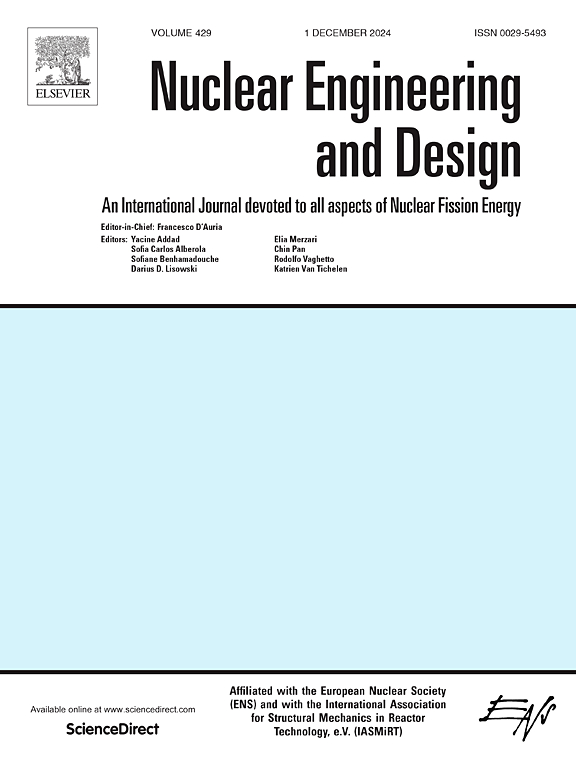Behavior mechanism and prediction models of stress corrosion cracking of stainless steels in pressurized water reactors
IF 1.9
3区 工程技术
Q1 NUCLEAR SCIENCE & TECHNOLOGY
引用次数: 0
Abstract
Stress corrosion cracking (SCC) which has long been an essential topic for alloys exposed to subcritical water systems,is an urgent issue for pressurized water reactors (PWRs). Due to the complexity of the interaction of materials, environment, and stress, the SCC mechanism of consensus and the prediction model with mechanic extensibility are unavailable. Based on reviewing the typical characteristics and critical influence factors of SCC of stainless steels, this paper systematically summarizes, compares the more mainstream cracking mechanisms, and from the perspective of empirical and deterministic methods, discusses the applicable conditions of a series of SCC prediction models with high recognition via practical data, which are of great significance for strengthening readers’ understanding of SCC critical parameters and the matching service environment of each SCC mechanism, promoting the accurate prediction of SCC behavior and cumulative damage in the pressurized water reactors.
求助全文
约1分钟内获得全文
求助全文
来源期刊

Nuclear Engineering and Design
工程技术-核科学技术
CiteScore
3.40
自引率
11.80%
发文量
377
审稿时长
5 months
期刊介绍:
Nuclear Engineering and Design covers the wide range of disciplines involved in the engineering, design, safety and construction of nuclear fission reactors. The Editors welcome papers both on applied and innovative aspects and developments in nuclear science and technology.
Fundamentals of Reactor Design include:
• Thermal-Hydraulics and Core Physics
• Safety Analysis, Risk Assessment (PSA)
• Structural and Mechanical Engineering
• Materials Science
• Fuel Behavior and Design
• Structural Plant Design
• Engineering of Reactor Components
• Experiments
Aspects beyond fundamentals of Reactor Design covered:
• Accident Mitigation Measures
• Reactor Control Systems
• Licensing Issues
• Safeguard Engineering
• Economy of Plants
• Reprocessing / Waste Disposal
• Applications of Nuclear Energy
• Maintenance
• Decommissioning
Papers on new reactor ideas and developments (Generation IV reactors) such as inherently safe modular HTRs, High Performance LWRs/HWRs and LMFBs/GFR will be considered; Actinide Burners, Accelerator Driven Systems, Energy Amplifiers and other special designs of power and research reactors and their applications are also encouraged.
 求助内容:
求助内容: 应助结果提醒方式:
应助结果提醒方式:


